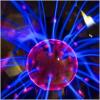im leaning toward glutamate as step one. it brings my mind to a similar test on other organ tissue, what level of acceleration or jerk is needed to produce lasting damage, and which organelle is the first to be damaged? like if you fell from a lethal fall, which organ took the most damage, and which organelles?
perhaps the physical impact jiggles and disturbs the jelloy mitochondria, and thats where the glutamate cascade starts. many people twitch or have little seizures, drooling, eyes rolled back. all kind of excitatory symptoms, then they fade obviously and youre just left with the unconsciousness.
Neurochemical changes associated with TBI
Normal transmission of signals involves neurotransmitter-mediated activation of receptors and subsequent controlled ionic changes in the postsynaptic membranes of neurotransmitter-releasing cells. Ionic changes across the bilipid membrane are meticulously regulated by energy-dependent sodium-potassium (Na+-K+) ATPase pumps, which maintain the membrane potential between −40 and −70 mV (Katsura et al., 1994). TBI induces transient cell membrane disruptions that lead to redistribution of ions and neurotransmitters, altering the membrane potential (see poster, panels B and C). During the acute phase (≤1 hour) after TBI, there is a massive release of glutamate from presynaptic terminals, which disrupts ionic equilibrium on postsynaptic membranes. The amount of potassium (K+) released increases with injury severity, as measured by microdialysis (Katayama et al., 1990; Kawamata et al., 1992). In these early studies, mild FP injury produced a 1.4- to 2.2-fold increase in extracellular [K+] levels that was blocked by tetrodotoxin (a neurotoxin that prevents brain cell firing), suggesting that this rise in [K+] is related to neuronal firing. More severe injuries produced greater increases (4.3- to 5.9-fold) in [K+] that were tetrodotoxin-resistant. Administration of kynurenic acid, an antagonist of excitatory amino acids, attenuated the [K+] increase in a dose-dependent manner, suggesting that the K+ surge is dependent on excitatory neurotransmitters. In order for brain cells to fire again, ionic equilibrium must be re-established, which requires ATP (cellular energy).
Mitochondrial Polymorphisms Impact Outcomes after Severe Traumatic Brain Injury
Yvette P. Conley,corresponding author1,,4 David O. Okonkwo (2014)
Patient outcomes are variable following severe traumatic brain injury (TBI); however, the biological underpinnings explaining this variability are unclear. Mitochondrial dysfunction after TBI is well documented, particularly in animal studies. The aim of this study was to investigate the role of mitochondrial polymorphisms on mitochondrial function and patient outcomes out to 1 year after a severe TBI in a human adult population. The Human MitoChip V2.0 was used to evaluate mitochondrial variants in an initial set of n=136 subjects. SNPs found to be significantly associated with patient outcomes [Glasgow Outcome Scale (GOS), Neurobehavioral Rating Scale (NRS), Disability Rating Scale (DRS), in-hospital mortality, and hospital length of stay] or neurochemical level (lactate:pyruvate ratio from cerebrospinal fluid) were further evaluated in an expanded sample of n=336 subjects. A10398G was associated with DRS at 6 and 12 months (p=0.02) and a significant time by SNP interaction for DRS was found (p=0.0013). The A10398 allele was associated with greater disability over time. There was a T195C by sex interaction for GOS (p=0.03) with the T195 allele associated with poorer outcomes in females. This is consistent with our findings that the T195 allele was associated with mitochondrial dysfunction (p=0.01), but only in females. This is the first study associating mitochondrial DNA variation with both mitochondrial function and neurobehavioral outcomes after TBI in humans. Our findings indicate that mitochondrial DNA variation may impact patient outcomes after a TBI potentially by influencing mitochondrial function, and that sex of the patient may be important in evaluating these associations in future studies.
A new vicious cycle involving glutamate excitotoxicity, oxidative stress and mitochondrial dynamics
D Nguyen,1 M V Alavi,2 K-Y Kim,3 T Kang,1 R T Scott (2013)
Glutamate excitotoxicity leads to fragmented mitochondria in neurodegenerative diseases, mediated by nitric oxide and S-nitrosylation of dynamin-related protein 1, a mitochondrial outer membrane fission protein. Optic atrophy gene 1 (OPA1) is an inner membrane protein important for mitochondrial fusion. Autosomal dominant optic atrophy (ADOA), caused by mutations in OPA1, is a neurodegenerative disease affecting mainly retinal ganglion cells (RGCs). Here, we showed that OPA1 deficiency in an ADOA model influences N-methyl-D-aspartate (NMDA) receptor expression, which is involved in glutamate excitotoxicity and oxidative stress. Opa1enu/+ mice show a slow progressive loss of RGCs, activation of astroglia and microglia, and pronounced mitochondrial fission in optic nerve heads as found by electron tomography. Expression of NMDA receptors (NR1, 2A, and 2B) in the retina of Opa1enu/+ mice was significantly increased as determined by western blot and immunohistochemistry. Superoxide dismutase 2 (SOD2) expression was significantly decreased, the apoptotic pathway was activated as Bax was increased, and phosphorylated Bad and BcL-xL were decreased. Our results conclusively demonstrate that not only glutamate excitotoxicity and/or oxidative stress alters mitochondrial fission/fusion, but that an imbalance in mitochondrial fission/fusion in turn leads to NMDA receptor upregulation and oxidative stress. Therefore, we propose a new vicious cycle involved in neurodegeneration that includes glutamate excitotoxicity, oxidative stress, and mitochondrial dynamics.
Efflux of potassium from neurones excited by glutamate and aspartate causes a depolarization of cultured glial cells
L. Hösli, Elisabeth Hösli, H. Landolt, Ch. Zehntner (1981)
The time course of the depolarization of cultured astrocytes and neurones by glutamate and aspartate corresponds well with the increase of the extracellular K+ concentration ([K+]0) measured with an ion-sensitive microelectrode placed in the close vicinity of the cells tested. It is concluded that the depolarization of glial cells is caused by an efflux of K+ from neighbouring neurones during their excitation by the amino acids.
Potassium channels underlie postsynaptic but not presynaptic GABAB receptor-mediated inhibition on ventrolateral periaqueductal gray neurons.
Liu ZL1, Ma H, Xu RX, Dai YW, Zhang HT, Yao XQ, Yang K. (2012)
γ-Aminobutyric acid (GABA) is the principle inhibitory neurotransmitter in adult mammalian brain. GABA receptors B subtype (GABA(B)Rs) are abundantly expressed at presynaptic and postsynaptic neuronal structures in the rat ventrolateral periaqueductal gray (PAG), an area related to pain regulation. Activation of GABA(B)Rs by baclofen, a selective agonist, induces presynaptic inhibition by decreasing presynaptic glutamate release. At the same time, baclofen induces a postsynaptic inhibitory membrane current or potential. We here report that in the ventrolateral PAG, the postsynaptic inhibition is mediated by activation of G protein-coupled inwardly rectifying K(+) (GIRK) channels. Blockade of K(+) channels largely prevents postsynaptic action of baclofen. In contrast, presynaptic inhibition of baclofen is insensitive to K(+) channel blockade. The data indicate that potassium channels play different roles in GABA(B)R-mediated presynaptic and postsynaptic inhibition on PAG neurons.














































